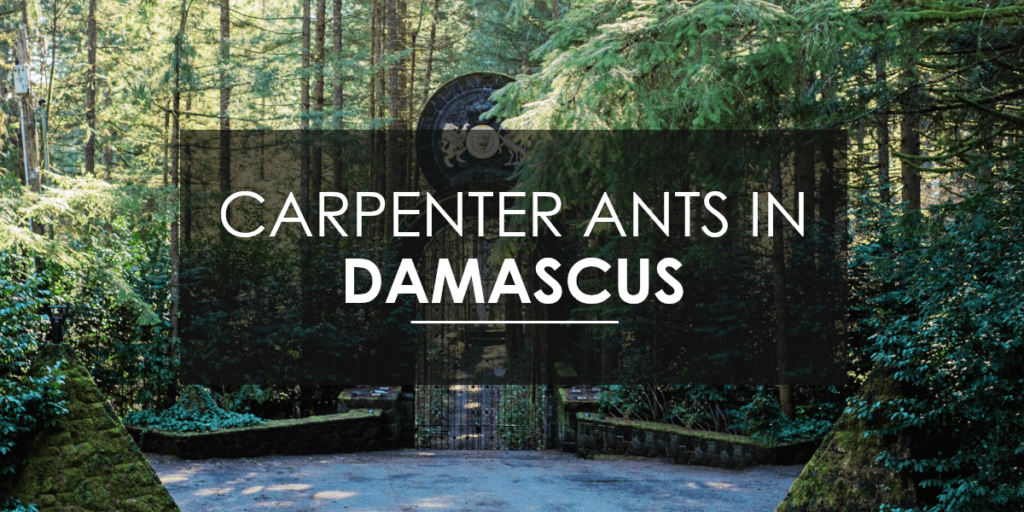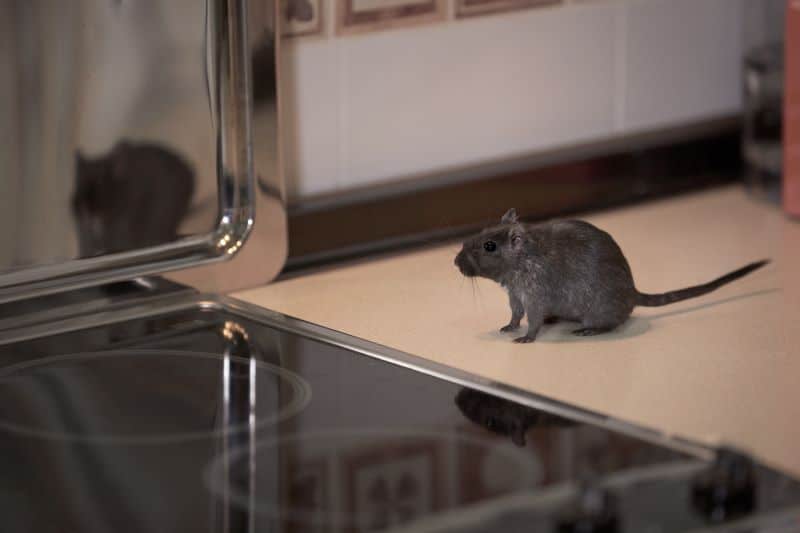What is the boxelder bug?
You might not know the boxelder by name, but they’re actually an incredibly common pest in the greater Portland and Southwest Washington area. In their maturity, these insects can be identified in appearance by how their black or very dark brown exoskeletons are offset by a distinguishable set of bright red or dark orange markings that outline the perimeter of their wings, abdomen, and thorax.
They have large, bulbous, red eyes and long, black antennae, the latter of which are marked in sections with a dark red band. These flying insects usually measure about one-half inch in length. Adolescent boxelder bugs are notable in that nearly their entire bodies are red in color until they reach their adult stage.
As their name implies, they are closely associated with the boxelder tree. This tree is where they will find their primary source of food (the seeds of the boxelder tree), and it is also where they will nest and lay eggs. Though the boxelder is the preferred tree of the boxelder bug, they can also be found eating, nesting, and living on certain varieties of ash, fruit, and other maple trees.
Can boxelder bugs hurt or sting people?
Boxelders are considered a nuisance pest, but are not categorized as an insect that is physically harmful to people, nor are they known to spread disease. But why are they a nuisance? Well, while the boxelder does not find itself in the category of “agricultural pests” like the armyworm, the stink bug, or the locust, it can cause life-threatening damage to the trees it chooses to call home, and, should they infest your home (as they are often known to do), they can cause cosmetic (note: not structural) damage to it and to its interior.
As noted, the boxelder’s diet primarily consists of seeds from the boxelder, ash, and certain fruit trees, but they will also eat other parts of the tree, which can result in scarring, damaging the tree’s health and giving it an almost cork-like appearance. This can also cause the fruit from trees damaged by boxelders to fall prematurely.
What kind of home damage do boxelders cause?
Many assume that the damage boxelders can cause is limited to the outside, but if a boxelder infestation occurs in the home, damage can ensue there, as well. Boxelders, like many insects, seek out warm areas and can often be found congregating on the sunny side of home, which is especially true when fall comes and boxelders are starting their overwintering phase.
If they can find an entry point in your home’s siding or other areas, they will seek voids in the walls of your home to build nests. And, like many other flying insects, the boxelder tends to follow the same flight patterns from year to year, making your home a destination for them to eat, nest, and breed. In other words, a total infestation of boxelder bugs!
Though they typically do not breed indoors (they prefer to be as close as possible to a food source during breeding season) they can mistake a home’s active heating system for the spring season, and will seek out ways to come indoors. Should they do so, they can do considerable damage to houseplants and cause a great deal of mess with their droppings. The droppings of boxelder bugs are known to stain carpets, upholstery, curtains, and so on.
What can I do to keep boxelder bugs from infesting my home?
Boxelder bugs are pretty simple in terms of their motivations. They want food, water, shelter, and to grow their colony. If we can work together to limit them from accessing these resources, then we’ll limit their presence in or around the home because it’s no longer desirable for them to be there.
If you’re considering planting box elder trees, then we’d recommend you plant the male trees, as the female trees are the seed-bearing trees that are attracting the insects to your property. If you have an abundance of boxelder trees on your property and are considering removing them because of large-scale infestations, then know that these flying insects will travel as far as two miles for food and water.
In other words, if you’re removing the trees but not removing the other factors that have brought them to your home, then you’re not fixing the entirety of the problem. You might end up with fewer trees and just as many insects! So tree removal is not something we recommend outside of extreme circumstances. You’re better off staying on top of the removal of seed pods from your yard as they fall on the ground.
How do I exterminate boxelder bugs from my home?
Because boxelders are flying insects that instinctively establish and follow flight patterns from year to year, you run the risk of facing an annual infestation should you choose to leave these creatures untreated and your home and property unexamined. And it will likely just grow worse.
When it comes to boxelder bugs, spring is for nesting, summer is when their eggs hatch and, in turn, the colony grows. You’re most likely to see an abundance of boxelder bugs on or around your home in the fall, as this when the colony will seek out warm coverage for overwintering. You won’t often see them in winter (unless they’ve made their way inside!).
Now, if they do make their way inside, there are different ways you can approach them, depending on how many you’re facing. If it’s just a small number, you can likely just catch them by hand or suck them up with the vacuum before disposing of them. However, if you’re facing a larger infestation, then you’re going to want to call on professional help, like the assistance that Aspen Pest Control can provide.
Any pest control business should be willing to tell you this one hard truth: flying insects can be difficult to entirely eliminate. It’s not impossible. But it’s not easy. And it’s not the extermination, it’s the containment. Luckily for everyone who chooses Aspen Pest Control for their boxelder extermination services, you’ve got a partner who will do all it takes to show you the value of our services.
Those who have chosen us for boxelder infestations report significant reductions in population after just a single treatment. Our team is committed to listening to your pest issue, carefully examining every nook and cranny that boxelders might be occupying, and applying the most-advanced, kid- and pet-friendly box elder bug control treatment methods available.
We strive to break the cycle of boxelder infestations by recommending and applying quarterly treatments, which is what we refer to as our Four Seasons Home Protection Plan. We’ll review the areas most susceptible to infestation, apply the appropriate volume of treatment products, and continue to observe these areas to give you the pest-free peace of mind you deserve.









